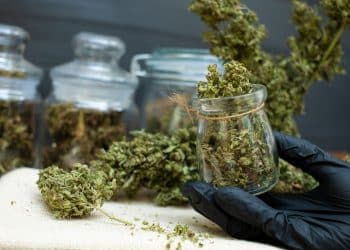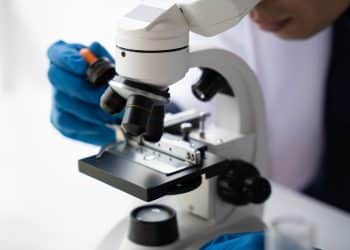How humans use millions of dead bodies to improve the cannabis industry.
From the macro, it looks like a shed. Zooming in and through the walls, we see lights, plants, pots, a reflective interior. Zoom in further, and we see leaves, sparkling green flowers, fibrous stems. Zoom in further and there are veins leading into the soil. Zoom in once more: a vast graveyard of diatoms—miniature, aquatic organisms, their fossilized skeletons strewn across the soil. What are they doing here?!
Cannabis is a beautiful plant, but take a closer look and you’ll see there are some uniquely bizarre (perhaps creepy) aspects to the world of cannabis. Such oddities are common in the presence of diatomaceous earth, since it is nothing more than the powdery, calcified corpses of diatoms. It helps keep mites and other critters at bay by slicing at their exoskeletons and drawing the moisture out of their bodies like a dusty, prickly succubus. Righteous, but gross.
However, diatomaceous earth isn’t just for bug booby traps. It can also be used in the extraction process.
Diatomaceous Earth Improves the Outcome of Cannabis Extractions
In more boring terms, diatomaceous earth is a type of sedimentary rock that has multiple industrial uses. When used as a filter in cannabis extractions, diatomaceous may improve the quality of some extracts. It does this in part by soaking up small hydrophilic molecules out of the final product.
According to one report, diatomaceous earth helps improve “precision purity, clarity, and throughput.” That’s because it provides a filter media with porosity as low as 0.45 microns. Minute particles and debris that otherwise might distort color and clarity are filtered out at this level.
It’s cleanliness and usefulness make it an ideal way to add the finishing touches to an extraction before packaging for commercial sale. It can also be used when reclaiming solvents by removing alcohol or moisture absorbed by the solvent during the extraction process.
Not only is diatomaceous earth a natural and clean way to filter out your cannabis extractions, but it’s also recyclable and can be easily turned into fertilizer. That’s good news because, according to a report put out by the University of Western Australia, discarding of spent diatomaceous earth can be expensive.
Sure, it’s made of the fossilized bones of millions of tiny creatures, but it’s not completely unamicable. Turning an expensive waste into a viable product is one way to make it more likeable to the masses. Considering the combined benefits of fending off pests and filtration efficacy, it’s no wonder diatomaceous earth is enticing to cannabis farmers and product manufacturers.
Image Credit: Nualgi Aquarium












